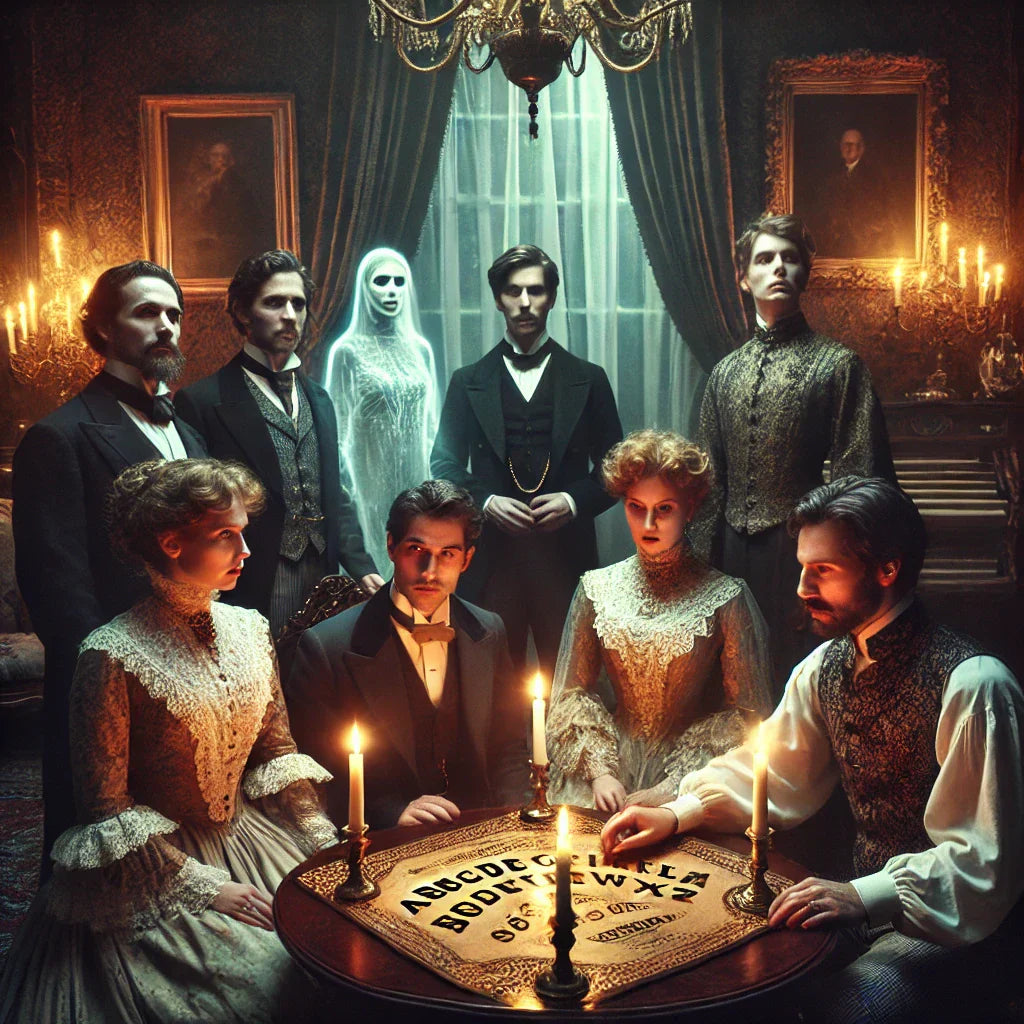
Whispers Beyond the Veil: The Victorian Obsession with the Paranormal
Share
The Victorian era (1837–1901) was a time of contradiction—scientific innovation flourished, yet so too did a deep fascination with the mystical. Amidst the rise of Darwinism and industrial might, many Victorians turned toward the unknown for comfort and answers. This cultural paradox gave rise to the spiritualist movement, shaping a legacy of ghostly pursuits, mediumship, and the tools of Victorian ghost hunters.
Driven by grief, high mortality rates, and the threat to traditional faith, spiritualism became a movement of hope. Séances became social rituals. The dim parlour glow, spirit mediums, and disembodied voices offered comfort to those mourning loved ones.
Key Tools of Victorian Spiritualism
-
Séances & Mediums: Central to the movement, where table rapping, ghostly moans, and spirit messages unfolded in eerie candlelit rooms.
-
Spirit / Talking Boards (Ouija): Invented pre-Hasbro, the original "talking board" promised communication from beyond the grave.
-
Spirit Photography: Double exposure images of ghostly figures enthralled the public.
-
Automatic Writing: Mediums let spirits guide their hands in trance-like states, producing mysterious messages.
-
Spirit Trumpets: Cone-shaped devices said to project ghostly voices in the dark.
-
Tipping Tables: A séance staple where tilts and movements interpreted ghostly answers.
Despite growing skepticism—figures like Houdini actively exposed fraudulent mediums—the Victorian pursuit of the supernatural inspired decades of occult research, literature, and folklore.
Today’s ghost hunters, modern witches, and spiritual seekers still use many of these Victorian tools, proving that the era’s fascination with the veil between worlds has never truly ended.
For full article, grab a copy of the Alternative Magazine Edition 3
